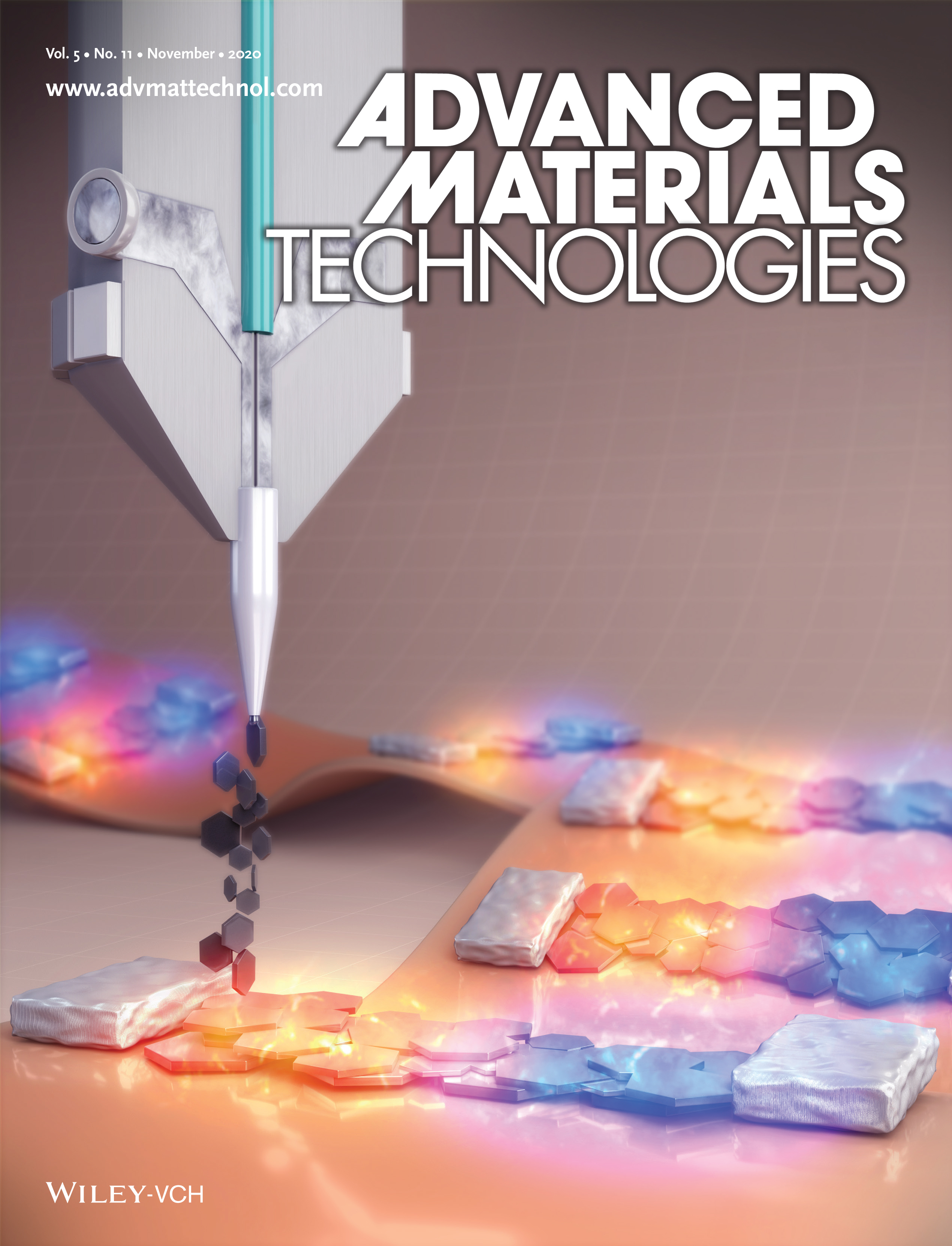
Imagine mixing together a few solutions and creating a material that would allow one to turn their body heat into electricity. A simple approach to energy harvesting is within reach now that an interdisciplinary team of researchers led by Boise State University has devised a simple approach to create high performance bismuth telluride (Bi2Te3) thermoelectric materials.
This process is known as solution phase synthesis. Led by College of Engineering lecturer Courtney Hollar and associate professor David Estrada, the team mixed together five different chemicals and, using temperatures achievable with a typical convection oven, controlled the chemical reaction to create bismuth telluride nanoflakes as thin as three strands of DNA.
“Standard fabrication of thermoelectric materials usually requires energy intensive processes that use ultrahigh vacuum, temperatures approaching those of molten lava, and complex manufacturing methods,” said Hollar, lead author of this study. “Our approach is a simple method of creating these materials at low temperature on a benchtop without adding directed energy, such as through ball-milling, a commonly used approach by other groups. Using this approach, we have also achieved some of the thinnest Bi2Te3 using solution phase synthesis.”
The ability to control the nanostructure of thermoelectric materials is widely recognized as a way to improve the thermoelectric performance of such materials for applications in solid-state thermoelectric energy conversion. Less well known is the importance of such structure in creating colloidal nanoparticle inks compatible with low-cost scalable manufacturing methods. The ability to print such thermoelectric inks opens up a new manufacturing paradigm for roll-to-roll production of flexible and wearable thermoelectric generators.
In the paper published in Advanced Materials Technologies, the team reports peak power factors approaching those of standard bulk materials from their flexible thin films fabricated using spin-coating processes. They also show the compatibility of their inks with aerosol jet printing – an emerging additive manufacturing technique used by the aerospace and telecommunications industries.
Aerosol jet printing enables 3-dimensional printing of electronics, including components such as resistors, capacitors, antennas, sensors, and thin-film transistors. The performance of such devices, for example the storage capacity of capacitors, is typically controlled by the geometric design of the device and the printing process. However, as noted by Optomec Aerosol Jet Product Manager, Bryan German, materials play a fundamental role in device performance.
“The application space that Aerosol Jet is capable of touching is directly related to the quality and types of inks we have access to. Novel material formulations continue to be important to the success and adoption of our technology in the market,” said German.
“Additive electronics manufacturing has been limited by the available material inks and their compatibility with available materials printers,” said Estrada, corresponding author on the article. “The majority of commercially available material inks are conductive metals. This work shows that colloidal solutions of thermoelectric materials can be tuned to match the rheological requirements of advanced materials printers such as aerosol jet printers.”
The ability to cheaply manufacture flexible and conformal thermoelectrics is extremely attractive as this approach could help reduce inefficiencies in the energy supply chain by recovering waste heat across the energy landscape including solar, nuclear, fossil fuels energy sources. Furthermore, flexible thermoelectrics are a potential energy source for wearable electronics and sensors, where body heat can be used to create electricity to power electronics directly or charge batteries and extend lifetime.
“Bi2Te3 and its doped materials report the highest thermoelectric performance at room temperature. The ability to cheaply manufacture large quantities of Bi2TE3 helps to improve the cost to power ratio, and the direct conversion of thermoelectric nanomaterials to functional devices, using additive manufacturing methods,” said research scientist Tony Varghese, a co-author on the manuscript.
This collaborative work was funded by the National Aeronautics and Space Administration, and includes contributions in materials synthesis from Notre Dame University and the University of California. The work is featured on the cover of Advanced Materials Technologies.
Hollar, C., Lin, Z., Kongara, M., Varghese, T., Karthik, C., Schimpf, J., Eixenberger, J., Davis, P. H., Wu, Y., Duan, X., Zhang, Y., Estrada, D., High‐Performance Flexible Bismuth Telluride Thin Film from Solution Processed Colloidal Nanoplates. Adv. Mater. Technol. 2020, 2000600. https://doi.org/10.1002/admt.202000600